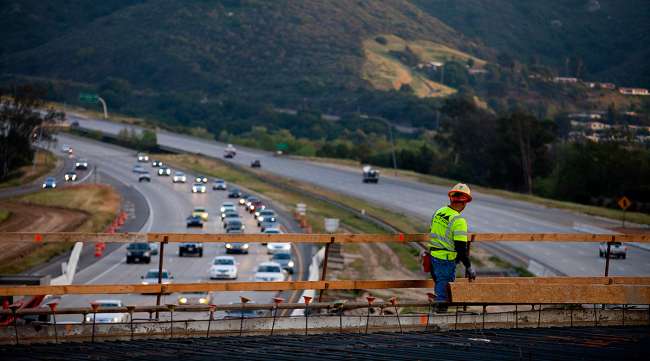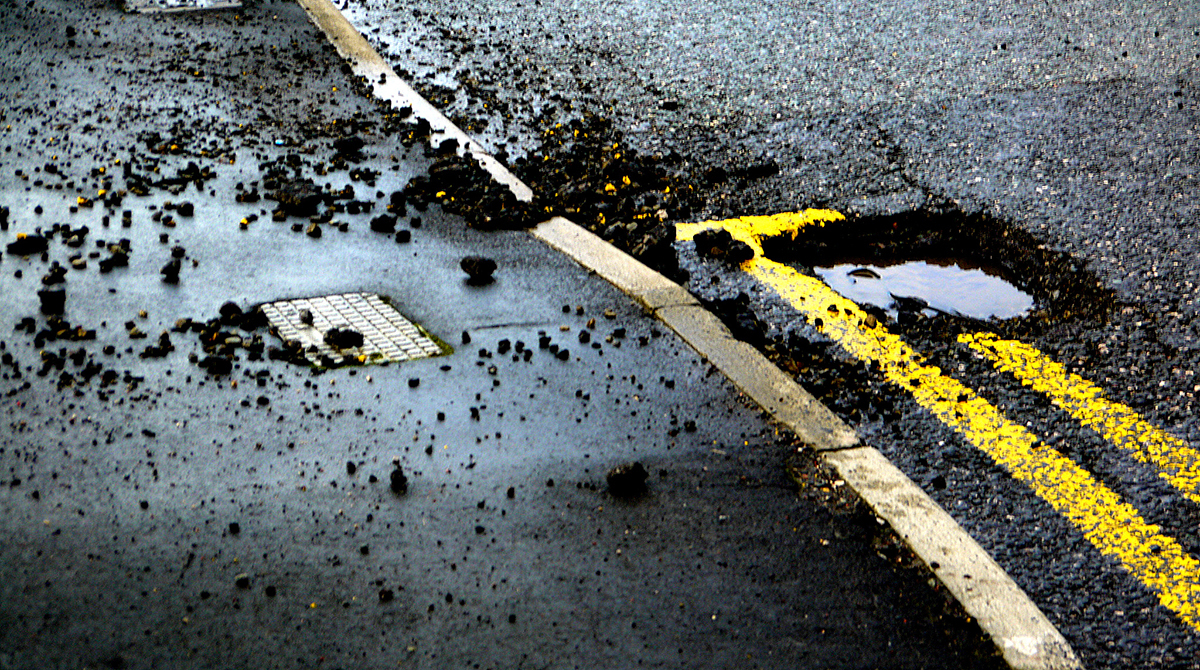Spend Gas Tax Money ASAP, New Caltrans Leader Says of Directive From California Gov. Jerry Brown

Caltrans’ new director takes her seat this week with immediate marching orders: Spend money, and spend it fast.
Gov. Jerry Brown has asked new Caltrans head Laurie Berman and new Transportation Secretary Brian Annis to turn the state’s gas tax hike into quick and visible highway improvements.
The pair describe it as a historic opportunity and a major challenge.
“Right now is a great time to be in transportation,” Berman said. “With (gas tax legislation) SB 1 we’ve got a lot to deliver, which is exciting. For a long time we did not have the funding to adequately maintain our system.”
State transportation accounts are expected to see $5.4 billion annually as a result of Senate Bill 1, a Brown initiative that raised the gas tax 12 cents per gallon and increased vehicle registration fees.
RELATED: Authorities consider options to untangle traffic in Southern California’s commercial spine
“At the end of the day, we just need to be able to deliver the projects in a way the public finds meaningful and notices.”
Berman, who got her start 34 years ago as a Caltrans bridge inspector and recently headed the San Diego district office, will replace outgoing director Malcolm Dougherty on March 3.
She will join Annis, whom Gov. Jerry Brown elevated last week to State Transportation Agency secretary, replacing Brian Kelly, now CEO of the High-Speed Rail Authority.
Caltrans oversees state highways and rails, while the Transportation Agency acts as umbrella organization for Caltrans, California Transportation Commission, DMV, CHP, High-Speed Rail Authority and other transportation-related departments.

_chrisUK/Flickr
The state’s stewardship of the gas tax already has come under attack from conservatives who hope to place a repeal measure on the November ballot. Jon Coupal, president of the Howard Jarvis Taxpayers Association, argues that state leaders have neglected transportation infrastructure for years, leaving him skeptical about the Brown administration’s current intentions.
“I think it is transparent what they are trying to do,” he said. “Look, see we are building projects like we promised. Their motivation is that this rollback is pending.”
RELATED: California gas tax repeal headed for ballot as money about to flow for road Rrpairs
In interviews last week, Berman and Annis deflected questions about the repeal effort, but acknowledged they must show that the state is spending the tax money efficiently and effectively.
“Our focus is on a good implementation of the program with good transparency, good oversight, getting the projects delivered ... so the public sees the benefits as quickly as possible,” Annis said.
“It is going to be a bit of a challenge,” Berman said. “We have to design the projects before you will start to see them. We’ve been able to accelerate some of the work.”
SB 1 funds have been flowing into state coffers since November. Caltrans has published a list of 13 projects that it has started and finished with SB 1 funds. The largest was a $10 million highway resurfacing near Needles in rural San Bernardino County. The smallest was a $1.5 million resurfacing of Highway 113 near Dixon in Solano County.
Berman said the state faces a host of logistical tasks, including the need to hire engineers, staff and consultants. The unions that represent Caltrans workers say the department fell behind on hiring in the lead-up to the gas tax. More engineers retired or left the department last year than Caltrans hired, for instance.
RELATED: Americans say they back higher gas tax to fix crumbling roads
“They had a lot of vacancies last year not knowing SB 1 was going to pass,” said Bruce Blanning, president of the firm that represents the transportation engineers union. “They increased taxes and they need to show they can deliver.”
Steve Crouch, director of public employees for the International Union of Operating Engineers, said hiring may not be easy, though, given competition from the private sector. His union represents state maintenance and construction workers and has a large presence in Caltrans.
“They are going to have major hiring and retention problems in certain areas of the state, particularly the Bay Area,” he said, contending that Caltrans wages are not keeping pace with the private sector in high-cost areas of the state.

Josh Koonce/Flickr
Caltrans also has begun reaching out to local governments, private contractors and utility companies to coordinate efforts where possible, Berman said.
“Caltrans is getting money, the locals are getting money, there is a shortage of materials, there is going to shortage of labor. We don’t want to be tripping over each other, fighting over scarce resources,” she said. “We are working with the construction industry to make sure everybody is ready.”
Last month, the California Transportation Commission allocated $1.5 billion in SB 1 funds to 479 cities and 58 counties for local road work.
The next two months will see a flurry of spending decisions. In April, the Transportation Agency will make $2.4 billion in grants available to transit agencies for large projects on a competitive basis, mixing cap-and-trade and gas tax funds. In May, the CTC will award $300 million for freight corridor improvements and a like amount for improvements on congested highways.
Caltrans is in line for a substantial chunk of those grants.
Berman issued a safety warning to drivers around the state, saying SB 1 work will mean more lane closures and “cone zones.”
“There are going to be a lot more contractor employees, a lot more Caltrans employees, and we really need people to slow down and pay attention as they are driving through work zones,” she said.
Distributed by Tribune Content Agency, LLC

